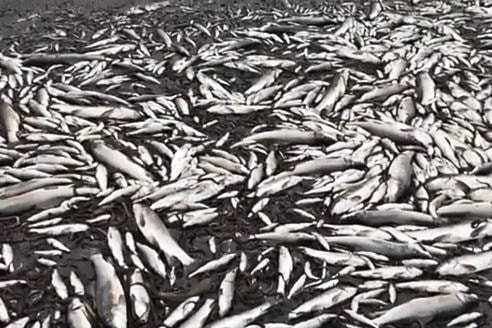While dry tributaries may see some relief this week, Scientists don’t yet expect current rain forecasts to improve the Skeena River’s record-low levels.
A significant storm forecast off the coast this week will reach the Terrace and Kitimat areas but it is not expected to reach inland sections of the watershed.
“It’s not forecasted to affect the Skeena, but maybe the Kitimat River or some of the smaller rivers closer to Terrace, like the Zymoetz,” said Jonathan Boyd, a hydrologist with the B.C. River Forecast Centre.
Record temperatures caused an early snowmelt in late April and May and since late August the prolonged period under extreme drought conditions have placed the region under Level 4 drought advisory.
“We just haven’t received the heavy rains yet that we expect in September and October,” Boyd said. “On the Skeena River at Usk it’s near record lows for this time of year.”
On multiple occasions Skeena flow volumes have fallen below all-time records since data was first kept in 1928. The latest figures from Oct. 16 puts the stream flow in the 1.19 percentile of historically observed levels.
As a result, the SkeenaWild Conservation Trust have identified a number of small tributaries too shallow for salmon to reach their spawning grounds.
READ MORE: Fishing bans on sockeye, chinook
“We’re seeing a lot of juvenile salmon and other fish in some of the side channels of the Skeena River and dying because the channels have dried up,” Executive Director Greg Knox said.
“Our greatest concern is for the success of the salmon that are able to spawn this season. Looking two, three, four years down the road when their offspring return we could see fewer numbers due to the low water levels this year.”
He estimates the mortality of the juvenile population could be in the 10s of thousands.
Social media posts have begun revealing the extent of the drought with riverbeds completely dry. In once instance a dense collection of whitefish appear to have died what once was a river’s last puddle, now just mud in a back channel of the Skeena River.
Knox hopes rain will bring levels up before winter sets in and feezes the more shallow rivers solid, wiping out further fish populations.
Unfortunately the forecast doesn’t look good. Environment Canada is projecting rain for much of this week but warning-preparedness meteorologist Armel Castellan said the area will likely only receive 65 mm total this month, far short of the annual October average of 190 mm.
Return of the blob
Adding to drought concerns is the reemergence of the blob, a 2,000-square kilometre mass of warm water in the Gulf of Alaska, showing the same characteristics of the 2013-16 phenomena. The blob is blamed for impacting the ecosystem on its lowest levels before rifling up the food chain and greatly impacting populations of salmon.
The new blob showed up on radar after an unseasonably calm and warm months begining early summer. Well into the fall the stagnant conditions allowed the surface of the northern Pacific to warm as much as three degrees above normal.
READ MORE: Warm blob hurts fisheries hope (2015)
“It has definitely contributed to the drought but it’s not the full story, because there’s been four years of drought for B.C. as a whole…how much of a component affected the Terrace area, the Skeena or the Stikine is a little bit harder to point your finger toward,” Castellan said.
Although its influence on the drought may be negligible, concern is mounting again over it’s impact on salmon habitat in Pacific waters.
“It’s one of those things that doesn’t change very quickly. Some media has been reporting that the active storm season will begin to mix some of that warm water down, but…there is a lot more analysis that needs to be done to see how much mixing is needed to erode that signature. You can imagine, if it’s quite deep you can mix the top layer and the satellite imagery will show for a few months that it looks more or less dissipated and gone. But it could be the more active ridge in the summer allows that signature to suddenly reappear.”
Castellan siad there is a lot of scientific debate on why the blob exists and how it’s connected to other events like the more famous El Nino southern oscillation, which is also expected to contribute to dry conditions this winter. “The debate is very active but I think [the blob] is probably going to be more of a permanent fixture than not. We’ll see over the coming decade or two.”
Such a prediction worries Knox, citing well-known depletion of sockeye and chinook stocks since the blob’s 2013 debut, and now this year’s decline of pink and coho.
“The warm water again being reported this year will likely impact the numbers for several years,” Knox said.
“I was hopeful it was over. We had a cooling trend but now it doesn’t look like a short term issue. Most likely we’re going to see significantly less salmon returning to our rivers and we need to significantly change how we manage them, how many fish we’re harvesting. In the fishing plan for the upcoming season, we should be much more careful with how many fish we’re harvesting.
“We have to expect that this might be the new normal.”
quinn@terracestandard.com
Like us on Facebook and follow us on Twitter
